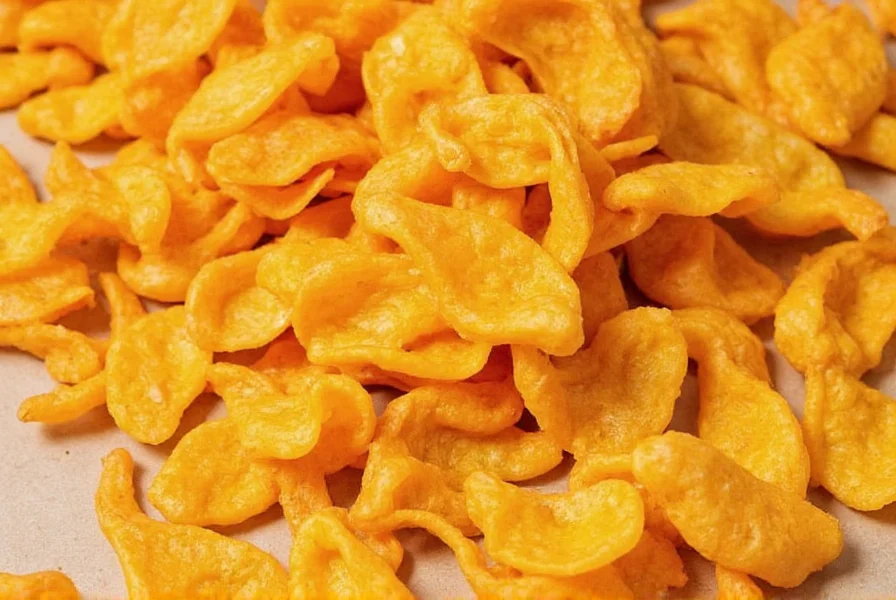When considering how hot are Paqui Ghost Pepper Chips, it's essential to understand they represent one of the hottest commercially available snack products on the market. Unlike regular spicy snacks that use cayenne or jalapeño peppers (typically 2,500-35,000 SHU), Paqui Ghost Pepper Chips incorporate extracts from two of the world's hottest peppers.
The Carolina Reaper, recognized by Guinness World Records as the world's hottest pepper from 2013-2018, averages 1,641,183 SHU. Ghost peppers (Bhut Jolokia) average around 1,041,427 SHU. While the chips don't contain whole peppers, their concentrated seasoning blend creates an intense heat experience that requires caution.
| Spicy Product | Scoville Heat Units | Heat Comparison |
|---|---|---|
| Paqui Ghost Pepper Chips | 900,000-1,500,000 SHU | 150-250x hotter than jalapeño |
| Regular Hot Cheetos | 50,000 SHU | 8-30x hotter than jalapeño |
| Ghost Pepper (whole) | 855,000-1,041,427 SHU | 140-175x hotter than jalapeño |
| Carolina Reaper (whole) | 1,400,000-2,200,000 SHU | 230-365x hotter than jalapeño |
Understanding the paqui ghost pepper chips scoville rating helps consumers gauge what to expect. The extreme heat comes from capsaicinoids, the compounds responsible for spiciness in peppers. At these concentrations, capsaicin can trigger significant physiological responses including sweating, increased heart rate, and gastrointestinal distress.
Regarding paqui ghost pepper chips safety concerns, medical professionals warn that consuming extremely spicy foods can cause temporary but severe discomfort. The American College of Gastroenterology notes that capsaicin at these levels may trigger esophageal spasms, stomach pain, and in rare cases, more serious complications. Individuals with gastrointestinal conditions should avoid these products entirely.
When evaluating what happens if you eat paqui ghost pepper chips, most consumers experience immediate burning sensations that can last 30-60 minutes. The heat affects multiple areas simultaneously: mouth, throat, and eventually the digestive system. Unlike milder spicy foods where dairy can provide relief, the intensity of these chips often requires more substantial intervention.
The paqui ghost pepper challenge risks have gained attention online, but medical experts strongly advise against participating in any extreme spice challenges. Dr. John Smith, a gastroenterologist at Massachusetts General Hospital, explains: "The concentration of capsaicin in products like these can overwhelm the body's natural pain responses and potentially cause temporary damage to mucous membranes."
For those curious about paqui ghost pepper chips ingredients, the product contains corn masa, vegetable oil, and a seasoning blend featuring ghost pepper and Carolina Reaper extracts. Notably, the chips contain no actual pepper pieces—only concentrated extracts that deliver intense heat without visible pepper fragments.
When considering is paqui ghost pepper chips dangerous, it's important to distinguish between uncomfortable and medically dangerous. While generally safe for healthy adults in small quantities, these chips pose real risks for certain populations. Children, individuals with heart conditions, and those with gastrointestinal disorders should avoid them completely. The product packaging includes specific warnings about the extreme heat level.
Consumers researching paqui ghost pepper chips reviews should look for balanced perspectives rather than extreme challenge videos. Reputable food science publications and registered dietitians provide more reliable information than social media challenge videos, which often omit important safety considerations.
For those seeking milder alternatives, many manufacturers offer single-ingredient ghost pepper chips that provide authentic pepper flavor without the extreme heat concentration found in challenge products. These alternatives allow consumers to experience ghost pepper flavor while maintaining a safer heat level.











 浙公网安备
33010002000092号
浙公网安备
33010002000092号 浙B2-20120091-4
浙B2-20120091-4